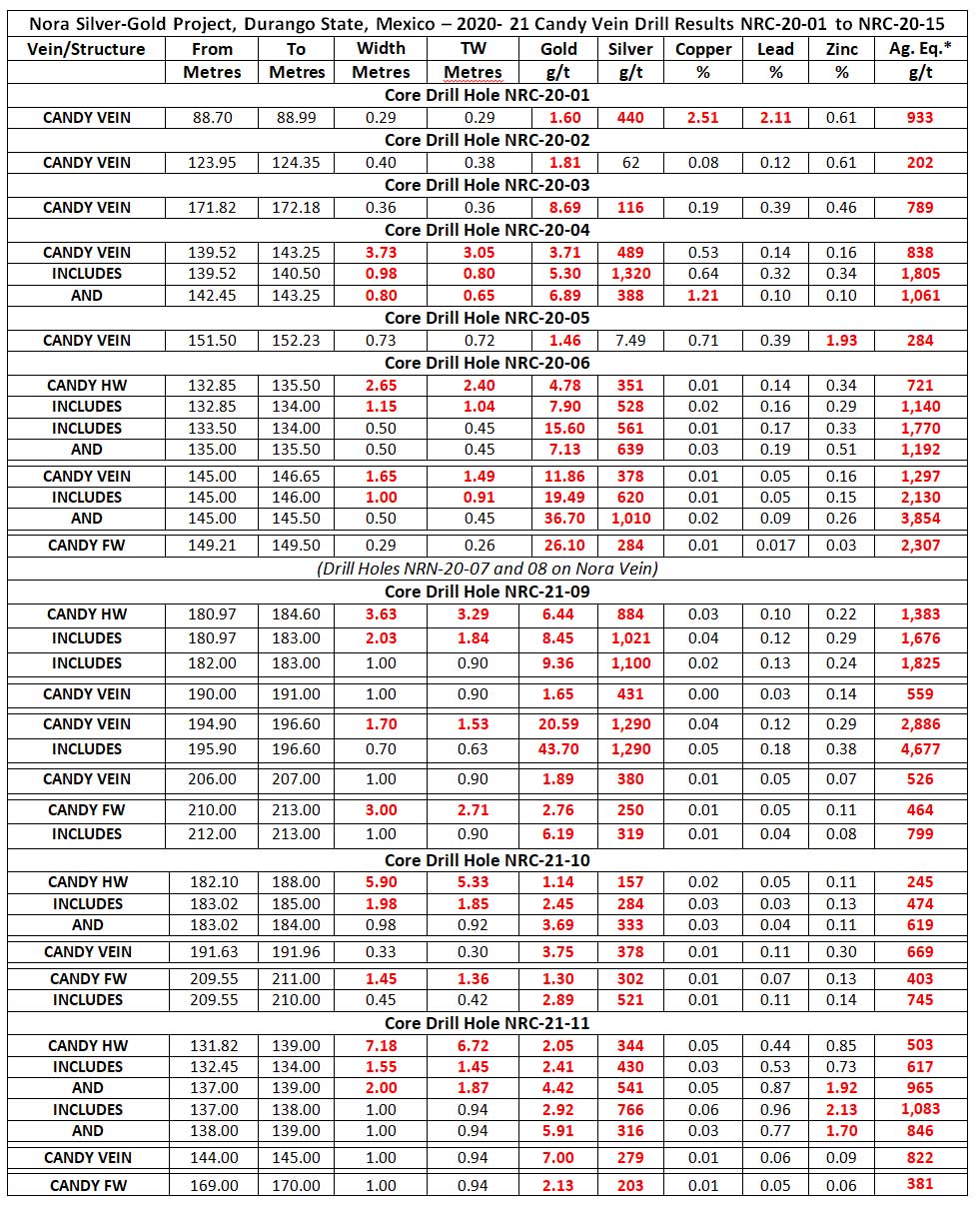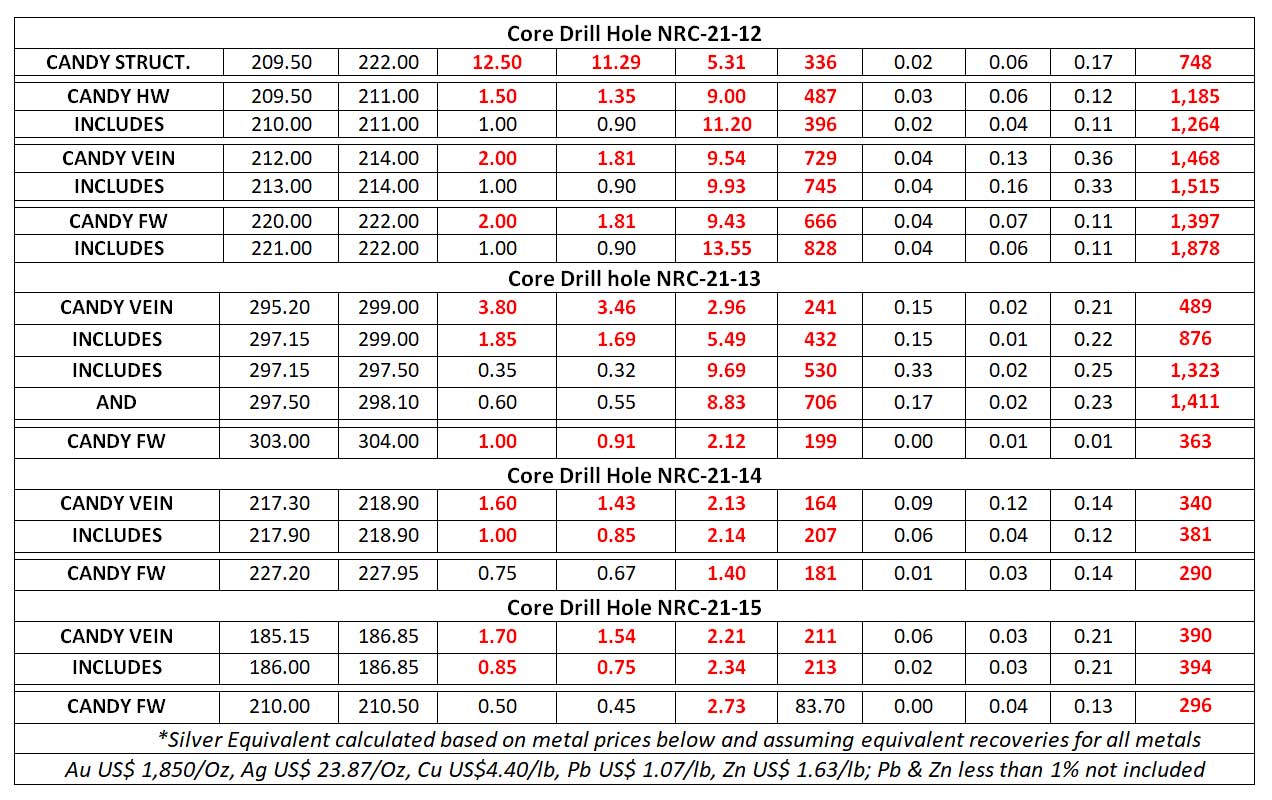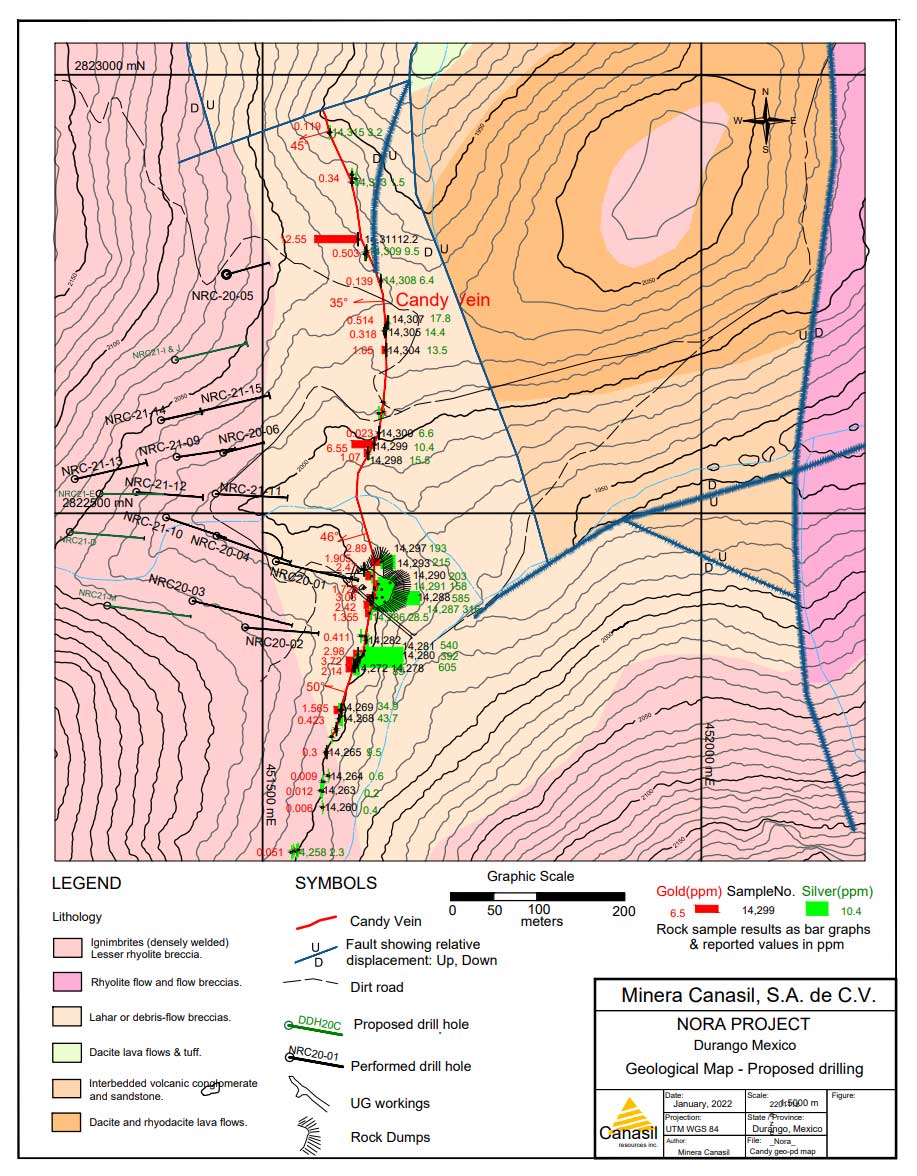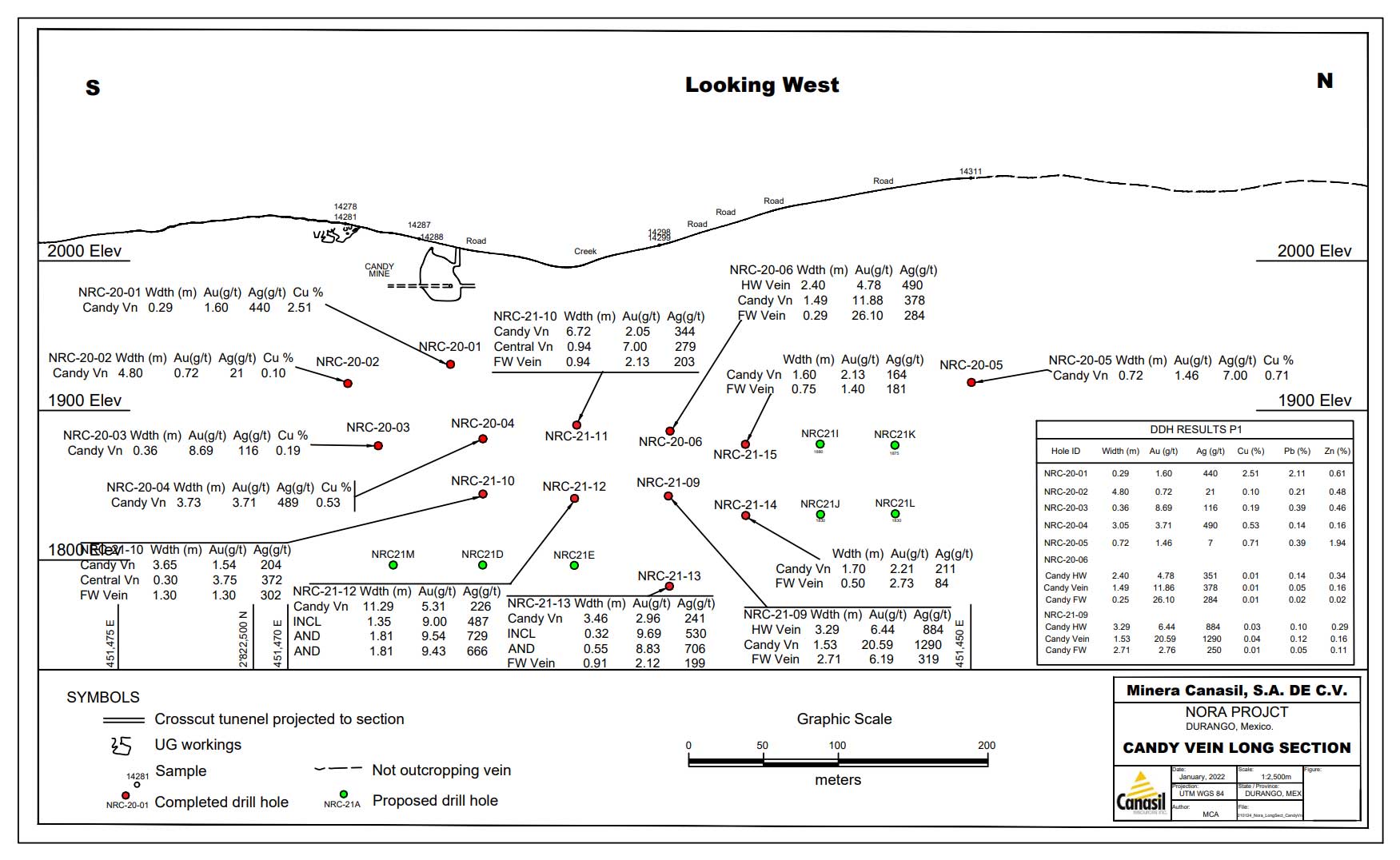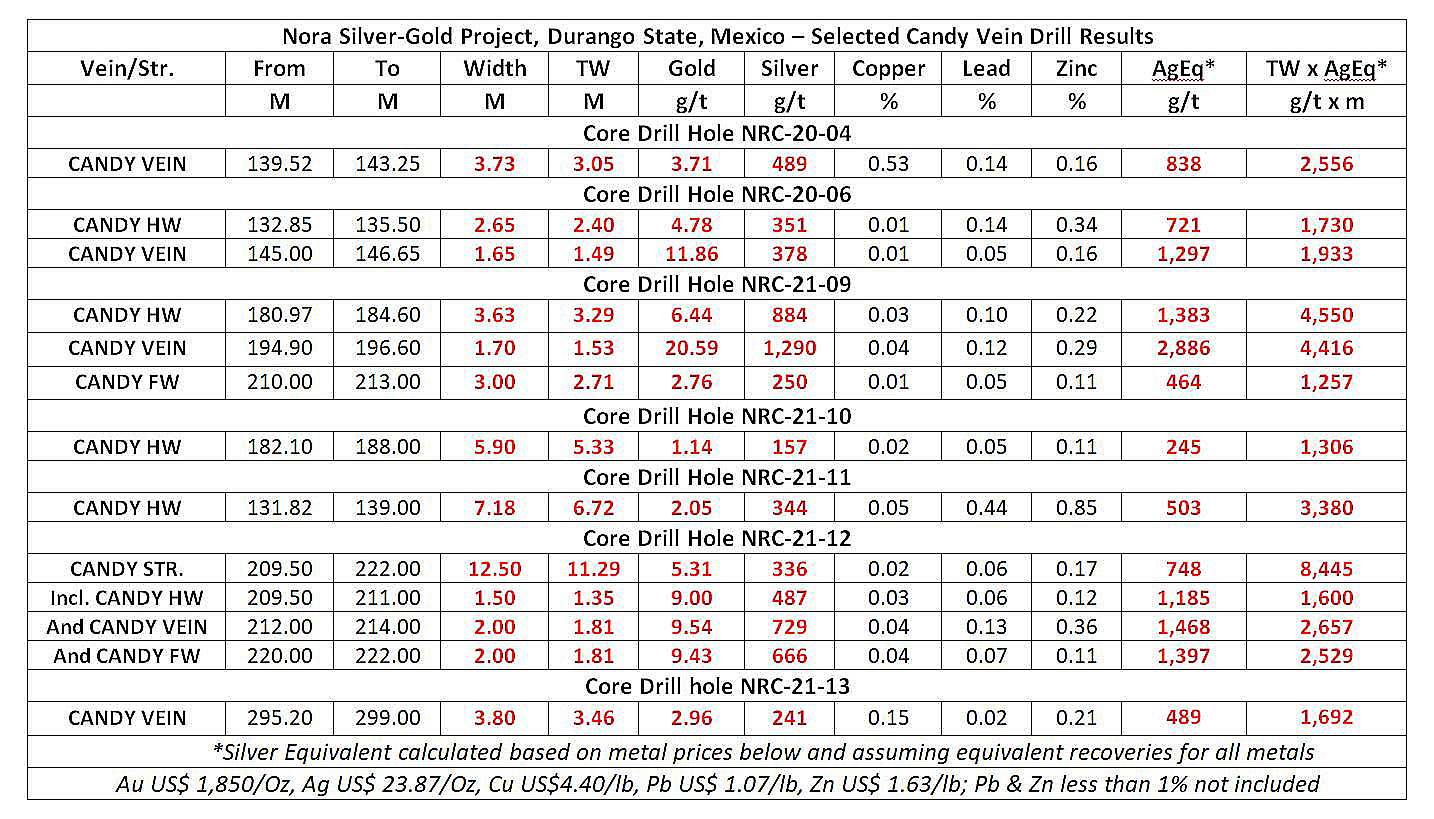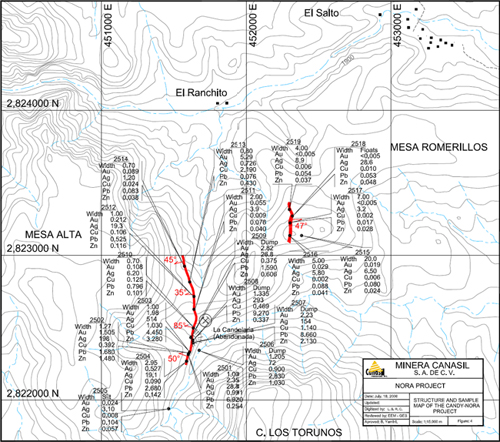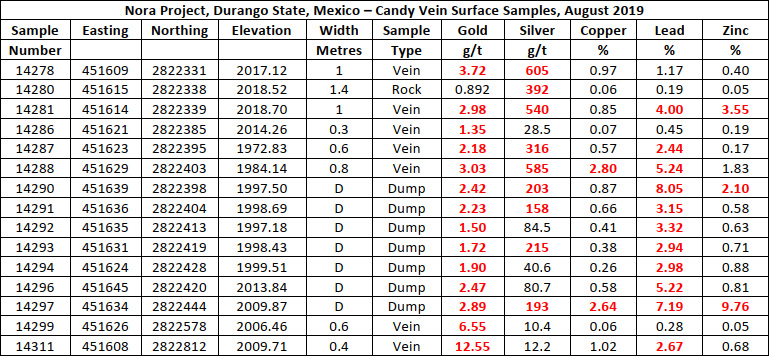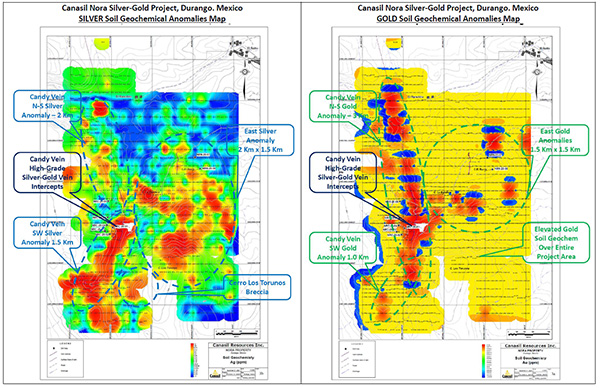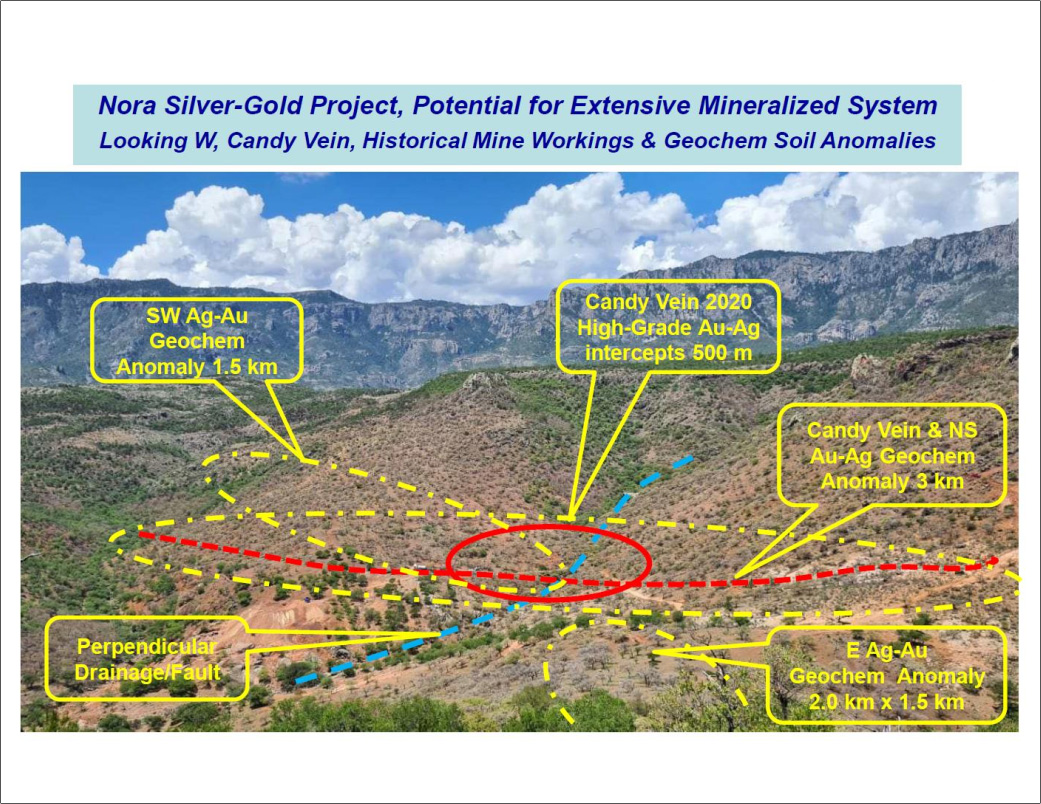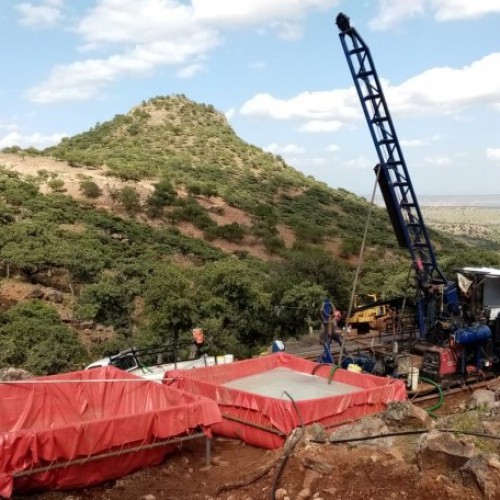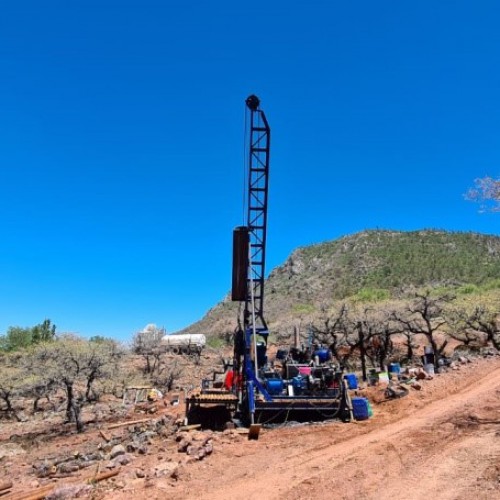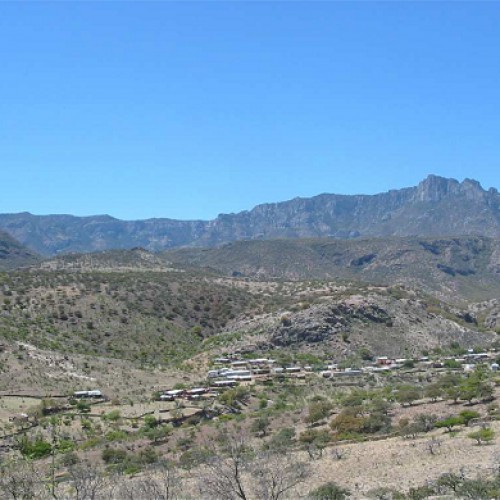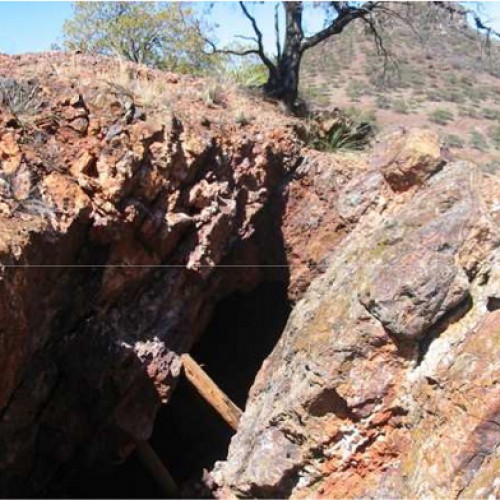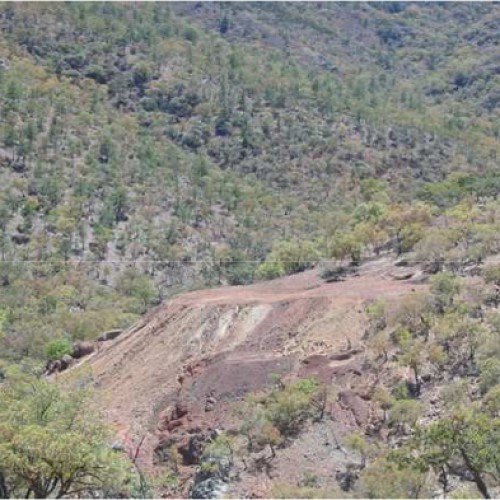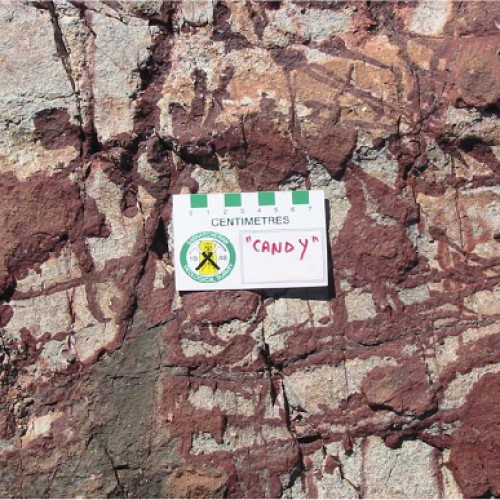Nora, Silver-Gold-Copper-Zinc-Lead, Durango State
- 200 km NW of the City of Durango in Durango State
- Within the “Silver Belt” of the Mexican High Plateau region, 50 km W of SSR Mining La Pitarrilla deposit and on trend with silver gold mines: Fresnillo San Julian and Endeavour Silver Guanacevi
- Rock chip samples collected from the Candy and Nora veins and nearby dumps returned significant gold, silver, copper, lead and zinc values
- Soil geochemical program identified five targets with potential for high-grade vein style mineralization as well as disseminated bulk tonnage mineralization
- 2020 – 2021 Candy vein drilling highlights include:
- 3.73 m of 3.71 g/t Au and 489 g/t Ag, including
0.98 m of 5.30 g/t Au and 1,320 g/t Ag (NRC-20-04) - 2.65 m of 4.78 g/t Au and 351 g/t Ag, including
1.15 m of 7.90 g/t Au and 528 g/t Ag (NRC-20-06) - 1.65 m of 11.86 g/t Au and 378 g/t Ag, including
1.00 m of 19.49 g/t Au and 620 g/t Ag (NRC-20-06) - 3.63 m of 6.44 g/t Au and 884 g/t Ag, including
2.03 m of 8.45 g/t Au and 1,021 g/t Ag (NRC-21-09) - 1.70 m of 20.59 g/t Au and 1,290 g/t Ag, including
0.70 m of 43.70 g/t Au and 1,290 g/t Ag (NRC-21-09) - 7.18 m of 2.05 g/t Au and 344 g/t Ag, including
2.00 m of 4.42 g/t Au and 541 g/t Ag (NRC-21-11) - 12.50 m of 5.31 g/t Au and 336 g/t Ag, including
2.00 m of 9.54 g/t Au and 729 g/t Ag, and
1.00 m of 13.55 g/t Au and 828 g/t Ag (NRC-21-12)
- 3.73 m of 3.71 g/t Au and 489 g/t Ag, including
- Under a 2024 agreement the Nora project was transferred to Silver Dollar Resources Inc. against a 2% NSR of which 1% may be bought back for $1,000,000.
Location
The Nora project is located approximately 200 km NW of the City of Durango and within 50 km of the municipalities of Tepehuanes, Santiago Papsquiaro and Santa Maria del Oro. The project is centrally located within the “Silver Belt” of the Mexican High Plateau region on a trend running from the northwest to the southeast through Durango State. The project area is within two hours driving distance from the city of Durango.
Project Geology and History
The geological setting is a Tertiary-aged volcanic flow-dome complex. Gold-silver mineralization is hosted within two structurally-controlled epithermal veins, Candy and Nora. Mineralization is typical of that found at many mines in the region, with gold and silver associated with galena, sulfosalt minerals and lesser pyrite, sphalerite and chalcopyrite. There are two principal veins outcropping at the Nora project: the Candy vein, which shows evidence of small-scale historical mining, and the Nora vein located 600 m NE of the Candy vein with a parallel N-S strike. It is estimated that approximately 10,000 tonnes of material may have been extracted using inclined shafts and a 230-m cross-cut tunnel. The Candy vein is 0.50 m to 2.00 m wide and is exposed in discontinuous outcrops for over 900 m, with the fault structure hosting the vein traced over 3 km. The Nora vein can be traced for 230 m along strike with widths of over 9.0 m.
Samples of vein outcrop and mineral dumps from the Candy vein returned significant gold, silver, copper, zinc and lead values. Surface samples from the Nora vein returned anomalous silver values associated with trace sulphides, with a geochemical signature typical of the higher levels of epithermal vein systems in the region. Historical systematic grid soil sampling over an area of 3 km by 2 km covering the Candy and Nora veins and projected extensions, showed elevated silver, base metal (copper, lead and zinc) and pathfinder (antimony and arsenic) values. The combination of the vein outcrops with large areas of anomalous silver and base metal values in soil samples may indicate additional concealed mineral systems. Other major deposits in the region include SSR Mining’s La Pitarrilla deposit located 50 km east of the Nora project.
Drilling
A total of 3,296 metres (“m”) has been completed in 13 core drill holes to test the Candy vein structure over a strike distance of 500 m and to a vertical depth of 250 m below surface. All 13 drill holes cut the mineralized vein structure, returning particularly wide high-grade gold (“Au”) and silver (“Ag”) intercepts within the central 200-metre zone tested. Highlights of drill results are listed above, and all drill results included in the table below with drill hole locations shown on the plan map and long section:
High weighted average true widths x grade values over 200-metre central zone
The highest true width (“TW”) x grade value, cut in core drill hole NRC-21-11, was 11.29 m TW with 5.31 g/t gold (‘Au”) and 336 g/t silver (“Ag”) for 748 g/t silver equivalent (“AgEq)*, giving a TW x grade value of 8,445 g/t AgEq* x m. The highest grade was cut in core drill hole NRC-21-09 with 1.53 m TW returning 20.59 g/t Au and 1,290 g/t Ag for 2,886 g/t AgEq*, giving a TW x m value of 4,416 g/t AgEq* x m. Most drill holes cut multiple mineralized intercepts with a total of 26 intercepts in all 13 drill holes, and 18 intercepts in the 7 drill holes in the central 200-metre zone. The weighted average TW of all 26 intercepts was 2.06 m with 4.25 g/t Au and 356 g/t Ag for 696 g/t AgEq and TW x grade value of 1,434 g/t AgEq* x m. For the 18 intercepts in the central zone the weighted average TW was 2.65 m with 4.48 g/t Au and 381 g/t Ag for 734 g/t AgEq* and TW x grade value of 1,945 g/t AgEq* x m. The table below includes selected results from the 7 drill holes within the 200-metre central zone returning True Width x Grade values of over 1,000 g/t AgEq* x m.
These results suggest that the Candy vein structure hosts consistently high-grade gold and silver mineralization over appreciable widths, which is open along strike and to depth for expansion. The widths and grades seen within the Candy vein structure form a strong base for delineating high value gold and silver mineralization.
Surface Sampling
Initial rock chip samples collected from the Candy and Nora veins and nearby dumps returned significant gold, silver, copper, lead and zinc values (see map below).
Follow-up sampling along over 900 metre strike of the Candy vein, including samples from vein outcrops, adjacent host rocks and mineral dumps from past mining activity, continued to return high gold, silver, copper, zinc, lead values included in the table below:
Systematic soil sampling over the central zone of the project area covering the Candy and Nora veins and projected extensions included over 1,200 soil samples taken at 50-m intervals along 2-km east-west grid lines with 100-m north-south spacing over 3 km. Results included widespread silver, gold, copper, zinc and lead geochemical anomalies coincident with pathfinder minerals including arsenic, antimony, bismuth, cadmium, molybdenum and mercury. From this program, five high priority targets were identified (see maps below):
- Candy vein high-grade silver-gold zone, along strike to the north and south, and between and below drill holes NRC-20-01 to NRC-20-06.
- Candy vein SW silver and gold anomaly with potential for high-grade vein style mineralization as well as disseminated bulk tonnage mineralization over 1.5 km.
- Candy vein N-S silver-gold anomaly with over 3 km strike extent for high-grade vein style and disseminated silver-gold mineralization.
- East Anomaly: Large multiple silver-gold anomalies located to the east of the project area extending up to and surrounding the Nora vein over an area of 2 km by 1.5 km.
- Breccia targets such as Cerro Los Torunos located in the southwest of the project area for bulk tonnage disseminated silver-gold mineralization.

